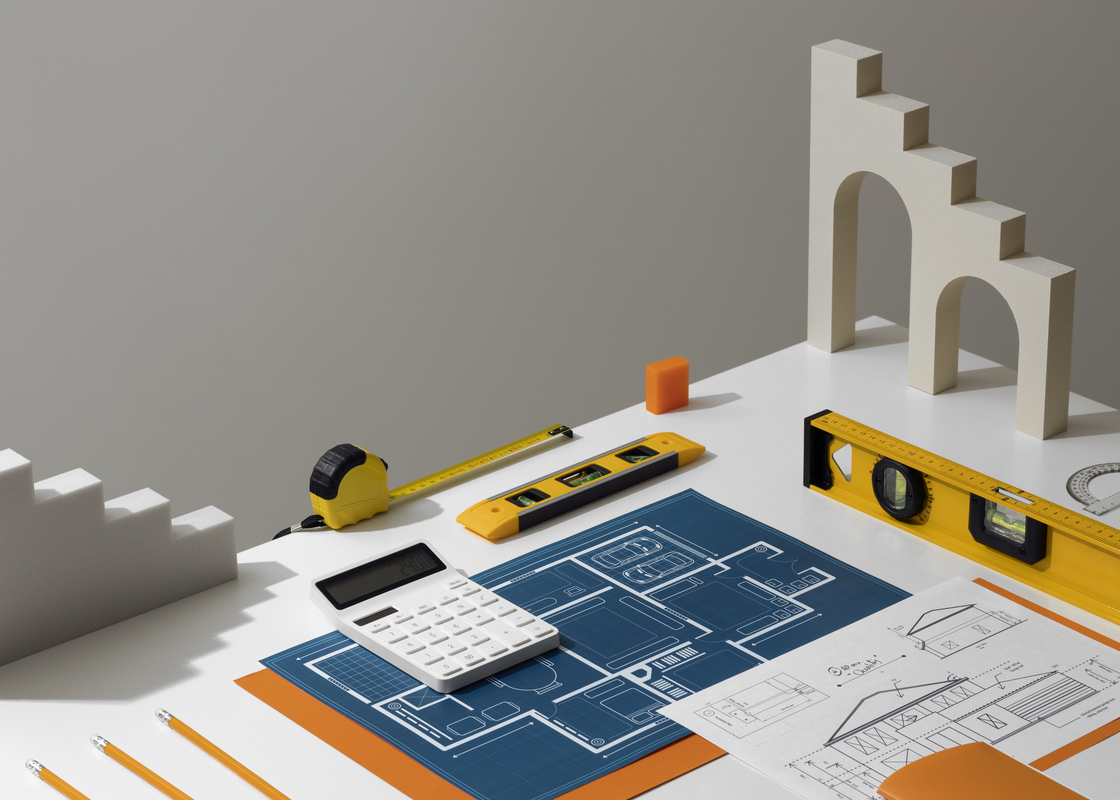Exclusive Neuroject Article:
Preconstruction planning is a strategic phase in the construction project that bridges the gap between the initial plans created during the predevelopment stage, as well as the physical activities related to site building. To balance cost efficiency and quality with risk identification and mitigation, this phase builds upon the initial project design by developing specific preconstruction planning construction. In the case of a construction project, there are many tasks and procedures to be carried out in an appropriate order, manner, or time frame. That’s why it takes so much careful thinking, deliberation, and care to carry out a preparatory stage or phase of construction.
And since construction projects involve many tasks and activities that are to be performed correctly, within the correct time frame, The more careful the preparatory procedures are, the better the execution of the project. It’s the transformation of broad strokes into fine details that’s the essence of preconstruction planning. There are several activities in this phase, from the development of designs and contracts to risk analysis and preconstruction planning.
The essence of the preconstruction planning phase aims at improving construction processes and saving valuable time and money by planning out every step of a project in advance so that it can better be managed. In this context, we shall examine why it is so important for the project owners and contractors to concentrate on thorough preconstruction planning to achieve an efficient construction phase.
Table of Contents
What is Preconstruction Planning?
Pre-construction is the planning stage of a construction project, involving the design team, general contractor, and client in collaboration to develop designs, schedules, and budgets. It is a highly collaborative and communicative process where owners collaborate with project managers, architects, contractors, and other professionals to create an action plan for completing the build efficiently.
The best utilization of resources and funds is to be determined during the preparatory phase. Before construction begins, the best thing to do is resolve any issues as soon as possible and provide suitable planning to ensure a good process later on. Prefabrication is important because it helps to prevent misunderstanding, delay, and unforeseeable problems on the construction site. Clients will be able to experience the benefits of careful preparatory planning, such as:
- It’s Unlikely to Go Over Budget
- Increased Efficiency
- Prevention of Possible Issues
- Early Assessment of Feasibility
- A Clear, Common Vision
- Improved Client Satisfaction
What Makes Preconstruction Planning Important?
Due to the complexity and potential for mistakes, preparatory planning plays a key role in construction projects. This type of training is similar to the preparatory work before an arduous expedition or a war operation since mistakes can cost and be irreconcilable. A client is hiring a construction company and providing them with the information they need. To discuss potential issues, scope, and details of planning a project, the designer shall meet with the client.
To discuss possible issues, scope, and details concerning project planning the designer will meet with the client. The client is also responsible for the preparation of budgets and schedules, taking into account the feasibility of a project. Preconstruction planning shall be as vital to any project as long-term planning, here are the reasons why it is so:
- Keeps Stakeholders Aligned: The preparatory phase allows stakeholders to discuss key details of a project such as its objective, design, schedule, budget, etc. on the same page. This promotes appropriate expectations and keeps people engaged at the outset of a project, enabling it to be started on sound ground figuratively and practically.
- Provides You with a Way to Avoid Problems Down the Line: Before problems occur, adequate planning helps ensure that stakeholders are aware of potential problems. This will reduce risk and uncertainty, thereby raising the chances for a project to be successful and well-implemented.
- Prevents Delays: The setting of project timelines is a significant part of the planning for construction. In doing so, they help everyone to understand what action needs to be taken and when. When teams have a clear schedule, they tend to meet the deadlines for their tasks more effectively and thus prevent delays.
- Maximizes Profit: All of these benefits have resulted in a healthier bottom line. Having a well-coordinated project that experiences fewer mistakes and delays means everyone spends less time and money putting out fires. The result is greater profitability, which is critical in a sector such as the building industry where margins are small.
- Higher Potential for Increased Work: Preconstruction planning also helps teams strengthen their relationships, in addition to promoting a smooth execution of the projects. It is intended to promote transparency and communication with stakeholders, leading to improved working conditions. If you’re doing this correctly, then people want to work together and that will open up a new set of collaboration opportunities.
The foundation of a building project moving from an idea to the real world is preconstruction planning. The owners, construction project managers, architects, engineers, and other stakeholders deal with important questions during the preconstruction planning phase of projects.
Addressing certain questions during the preconstruction planning phase can help the project team avoid obstacles and ensure a smooth start to the project. The work done during this phase sets the foundation for the project’s future success or failure. Projects with unstable budgets, inadequate risk management strategies, insufficient site assessments, and poor designs often encounter problems during the construction phase.
Change orders, budget or financing issues, and other problems are likely to arise. Successful developers and construction professionals understand that preconstruction planning management is crucial for the success of a project.

The Preconstruction Planning Team
Before commencing preconstruction planning activities, the owner or developer will assemble a team that will collaborate to complete all the necessary tasks to prepare for the project. The professionals and companies involved will vary depending on the type, size, and scope of the construction project. The preconstruction planning team is responsible for planning and organizing the construction processes before execution. Some of their tasks and responsibilities include:
Managing Preconstruction Planning Documents
To continue with different activities, the construction projects require teams to file and submit documents. These documents must be managed by the preconstruction planning team and completed by the right people at the right time, these documents are:
- Construction Documents (CD):When an owner intends to start a construction project, they issue a Request for Proposal (RFP) to announce the job, explain the project, and invite bids from contractors. Interested parties then review the RFP and prepare a proposal outlining how they would carry out the project. On the owner’s side, those responsible for managing the RFP process are assigned the task.
- Request for Proposal (RFP): When an owner plans to undertake a construction project, they release a Request for Proposal (RFP) to announce the job, describe the project, and invite bids from contractors. Interested parties then review the RFP and prepare a proposal outlining how they would execute the project.
On the owner’s side, those responsible for managing the RFP process are tasked with evaluating the submitted bids to determine which contractor to partner with. Meanwhile, those on the contractor’s side must carefully assess any RFP invitations and decide which projects are worth bidding on.
- Permits: Evaluating submitted bids to determine the best contractor to partner with. Meanwhile, contractors must assess RFP invitations to decide which projects to bid on.
Facilitating Communication
Collaborates are essential in particular at the beginning stages of projects, when major details need to be worked out. As a result, communication between parties needs to be facilitated by the preconstruction planning teams.
- Following Up on Unanswered Questions and Loose Ends: When undertaking complex projects, it’s not always possible to answer all the questions right away. Sometimes, teams need to confirm their schedule before committing to a particular milestone. For instance, the contractor may be waiting for the city to issue a permit. Whatever the case may be, the preconstruction planning team must be skilled at keeping track of any unanswered questions and ensuring that they are resolved promptly.
- Keeping Everyone Informed and in Sync: Preconstruction planning teams are responsible for coordinating with stakeholders and keeping them informed. This may involve scheduling meetings, sending updates, checking in with individuals, or all of the above.
Even if we’d like the project to go exactly according to plan, such a thing is seldom in reality. Projects often evolve and change as more information comes to light, resulting in deeper discussions among teams about how activities should be carried out. If such a situation occurs, it is very easy for people to lose sight of the goals they have worked towards and move their projects in an unpredictable direction. It is the responsibility of the preconstruction planning team to ensure that everyone is aligned and focused on the larger objectives of the job.
Activities Included in the Preconstruction Planning Phase
Let’s take a look at what goes on during the construction process, now that we have discussed the purpose of preconstruction planning and who is involved.
The Preconstruction Planning Meeting
Meetings with project stakeholders are the beginning of an efficient preconstruction planning process. These meetings should be held for several reasons:
Review Essential Project Details: Preconstruction planning meetings are held to review documents and confirm details, ensuring everyone is on the same page.
Answer Preliminary Questions: These gatherings provide an opportunity for people to ask questions and gain clarity on project scope, requirements, timelines, and schedules.
Allow Stakeholders to Meet: Get a comprehensive guide to preconstruction planning with APX Construction Group. Learn how to navigate project intricacies with ease.
Conduct a Risk Assessment
Stakeholders should identify all risks and hazards before entering a work site, and drawing up plans to mitigate them. In the healthcare industry, risk assessment is of particular importance. For these projects, the preconstruction planning risk assessment (PCRA) is a must-do activity. The Joint Commission, which is in charge of enforcing PCRA, proposes the following measures for ensuring compliance:
- Tell Us About the Project so You Can Start to Assess Its Risks.
- Look For Additional Risk Areas in the Surrounding Area
- Consider Additional Risks Outside of Infection Which May Affect Health and Safety
- Review the Mitigation Plan for the Risks Mentioned Above.
- Conduct an Interim Life Safety Measures (ILSM) Assessment and Select Which Enhanced Measures to Implement
- Continuously Monitor the Project
Preconstruction Planning Survey
The teams shall survey adjacent properties before proceeding to construction to establish their condition and visually identify signs of exterior and interior damage, such as roof deformation or any other structural modification. In that case, the preparatory teams shall draw up a survey document setting out the current conditions of the adjoining property. It is to protect the developers or contractors from all claims which might arise in the future.
For example, when the neighboring owner claims that certain costs have been incurred because of your team’s work, you can refer to a preliminary construction survey to ascertain whether or not there were such issues before its implementation.
How the Preconstruction Process Benefits a Project
During the preconstruction planning process, an initial budget and a preliminary schedule are created. It’s important to note that these estimates are not final, but they provide the customer with a better understanding of the project’s cost and completion timeline. This information is crucial for the client to determine whether the project is feasible for their needs.
The scope of work may be agreed upon between the designer and his client at an earlier stage through close cooperation while construction is underway. In addition, they can determine who is accountable for what during each phase by setting out responsibility chains or matrices.
The client shall normally be charged for preparatory services, but the amounts are often small relative to the total cost of the project. Therefore, they have less to lose if the customer and the contractor do not want to work together.

Preconstruction Planning Process Steps
It is a very complex construction as a whole, particularly in terms of preconstruction planning. It can be overwhelming to take a look at this work in its entirety. However, it is manageable if you divide the preparatory work into manageable steps. The benefits of preconstruction planning are fantastic, and it is clear that this process helps to set the client up for success. Usually, the preparatory phase takes up to 2 to 12 weeks and the subsequent seven components are set out in detail:
1. The Scope
The scope of a project is the first thing that happens in preconstruction planning. You’ll be providing specific answers to some of the questions, before you do anything else, you need to determine how many projects you want to carry out. The scope can refer to a variety of things, but in pre-construction, it specifically refers to defining the following:
- What Exactly Is This Project? Housing, Office Buildings, shopping malls, Etc.
- The Size of the Lot and Its Structure.
- The Project’s Constraints
- The Targets Will Result in the Project Being Successful if They Are Achieved.
These points may appear to be obvious at first glance, but it is necessary to document and discuss extensively with all stakeholders involved in the project.
2. Budget
You will need to determine a budget after you have laid down your goals and objectives. Budgetary preparation is one of the principal components of preparatory planning because, without input from general contractors and design teams, it can be very difficult to estimate a project’s total cost.
The vision you have will be taken into consideration and worked together with contractors and designers to arrive at realistic cost estimates. If necessary, or if you have the money to spend, they shall include alternative options that will help reduce your budget while offering more premium options.
It’s much simpler to meet the expectations and not overspend down the road when you have a solid budget set up in advance. Furthermore, you may be able to ask for help with construction financing as soon as you know your precise numbers.
Budgets are necessary for any construction project, but in particular very critical during the preconstruction planning phase. Because this is the first time the customer has a confirmed expectation of how much they will have to spend, and it sets the tone for the rest of the project a budget is difficult. A wide variety of factors, such as labor costs, various materials, rentals, and so on, must be taken into account. That’s giving you a little flexibility, without rupturing your customer in an instant.
3. Materials
What’s the source of building materials going to be? What exactly are they going to be? How much will it cost? If you do not answer those questions at the early stage of construction, issues will likely arise from this point on. You’ll answer your questions and collect the materials at this stage. The quality of the materials can be all that is needed to succeed in a project.
There is high demand for some premium materials and the wait time from order to delivery can be long. All materials and equipment necessary for the construction of this project will be identified by the General Contracting Company in this phase of preparatory work.
They’ll pay particular attention to materials that must be ordered in advance so you don’t run out of time. To maximize productivity, the collection of materials shall be incorporated into the overall project schedule.
In addition, it’s now necessary to schedule everything since you have already set out the stages of construction. This pre-construction stage will require scheduling the various phases of the project with your team and reaching out to subcontractors to verify they can complete their work at times that work for your project. The requirements of the permit, inspection, and customer feedback must also be taken into consideration in your project schedule.
4. Team
As the design of your construction project is finalized, the role of the construction company becomes more apparent. Each phase of the construction work requires different skill sets and capacities. The general contractor will secure teams of contractors who are available and interested in your project.
It is important to note that some construction workers are better suited for certain types of projects than others. Some people can work on any type of project, while others must work on specific projects. As the owner of a construction company, it is your responsibility to get the best team possible to complete the project on time, within budget, and with the high level of quality your customers expect.
It is critical to select a few key people early in the pre-construction process because they will be involved in many of the remaining steps of the pre-construction process. You can’t — and shouldn’t — do it all alone, and you don’t have to if you choose the right team.
5. Permits and Inspections
- A key part of the preparatory construction planning process, which cannot be missed, is requisite permits and inspections. You ask for trouble and delay in the course of your work if you neglect this part or rush it out without adequate planning. All potential risks must be mitigated before the commencement of construction. This includes:
- Evaluating the Construction Site
- Obtaining Necessary Permits
- Continue to Carry Out the Required Inspections
- Securing Lot Approval
Your construction partner will have a thorough checklist of all required permits and inspections in your state. It will not be possible to officially start building until all of these expectations are met.
6. Communication
In which case, is it preferable to communicate by telephone or email? When are you available to check on the progress of construction? The groundwork for effective communication down the line is laid in a successful preconstruction process. A communication plan that works best for all stakeholders will be worked out between clients, design teams, and contractors.
To reduce the obstacles that may arise, it is necessary to develop good communication as a team. Because the designer is waiting for an email reply, and you’re not checking your email, you don’t want your project to be delayed. The project will move forward efficiently if good communication is a requirement from the outset.
Preparative communications, particularly in the design phase of a project, are extremely important. You must be able to communicate the final appearance of a structure, whether it is necessary to modify an initial design or possible additions. Visual aids must be included to allow more people to see the final details of a structure when they are looking at plans.
7. Planning of Various Construction Stages
Without a plan, nothing can be done. It is a great time to plan the different stages of current building construction, during preconstruction. To turn building materials into a real house you must outline what will have to be done, splitting them in three distinct stages with very tight deadlines.
You should plan out the execution of the following construction stages:
- Site Preparation and Construction
- Preliminary Framing of HVAC, Plumbing, and Electrical
- Insulation Drywall and Interior Fixtures for the Driveway and Outdoor Walkways
- Countertops and Flooring
- Fixtures for the Outside Roofing

Transitioning Seamlessly from Preconstruction to Construction
Preconstruction is an important stage in the construction process, laying a solid foundation for project completion. Careful, thorough analysis and intelligent decision-making are needed in the context of elements such as design development, contractor choice, risk analysis, project schedules, permitting, or construction mobilization.
In the best case, a single source of truth that carries relevant information from the design to the construction stage is relied upon by project owners and contractors. To mitigate the risks of miscommunication and data loss, construction project management software makes it possible to create a single repository containing all Project Data which enables stakeholders to access relevant details from an official or field office.
During and after the construction works, owners and contractors can benefit from an easy comparison of prefabricated plans with actual performance on a building site to provide more precise estimates and results for subsequent projects. Project teams are in a position to remain on track and maintain timetable and budget while delivering quality according to project plans when they have this information at their disposal.
Conclusion
Pre-construction is the planning stage of a construction project where the design team, general contractor, and client collaborate to develop designs, schedules, and budgets. Adequate planning ensures stakeholders are aware of potential problems, reduces risk and uncertainty, and prevents delays. All of these benefits result in a healthier bottom line and greater profitability.
Preconstruction planning is vital for any building project. It involves answering important questions, managing documents, and assembling a team of professionals to plan and organize construction processes. Collaboration and communication are crucial, especially during the initial stages. The team must keep track of unanswered questions, coordinate with stakeholders, and keep them informed. Meetings with stakeholders are essential during construction. The team should survey adjacent properties before proceeding to protect developers or contractors from future claims.
Preparations for future construction require a lot of work, but it’s worth the effort. A good preconstruction plan will allow teams to save considerable time and money during the construction phase, as long as it is properly implemented. It’s a great way of reducing risks, costs, and rework so you can finish your work on time and within budget. To help you plan your path to success, Autodesk offers a powerful set of preconstruction tools.
Pre-construction planning involves determining the project’s scope and budget, answering questions about building materials and scheduling phases with the team and subcontractors. Effective communication is crucial. Construction project management software can help create a single repository for all project data.
More article for reading:
Construction Planning; Everything You Need to Know in 2024
Resources:
APX Construction Group | Select Hub | Procore | ProEst
For all the pictures: Freepik




